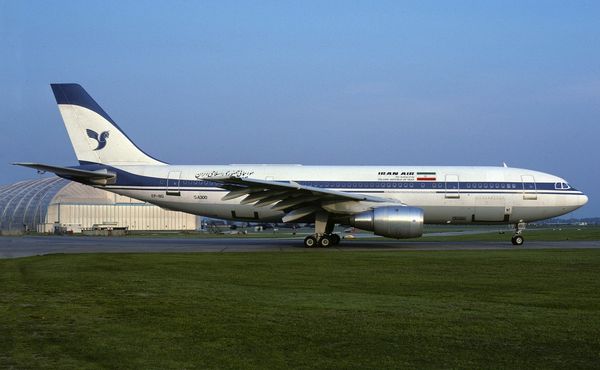When people think of micronations, many think about small-landlocked countries like Lichtenstein, San Marino, or the Vatican. However, many of the world's smallest states are archipelagos, a series of small islands. These nations have vibrant marine life and a rich history of natural beauty but lack physical landmass. Unfortunately, the rise of sea levels globally puts many of these island nations at risk of total encapsulation by the ocean.
As isolated and small as these micronations might be, many still have international airports, which serve as both a transit hub for commercial airliners and a key contributor to foreign trade. These airports provide a unique insight into how land is allocated in these places, as well as the importance of maintaining consistent air transit routes to these countries.
The globe’s least-touristed country, Tuvalu, sits in the middle of the South Pacific, about 2,600 miles South of Hawaii. Tuvalu hosts about 11,000 total residents, and their most notable export is internet domains, being that Tuvalu based websites end with ".tv".

The Funafuti International Airport (FUN) is the country's only international airport, and sits at the widest and highest point in the country, at 9 feet above sea level. Although presenting a short runway — only 5,000 feet long — the airport is crucial to air traffic in and out of the country. Fiji Airlines and Air Kiribati both use FUN to have flights in and out of the country, as well as cargo aircrafts which use the space to bring in medicines and food. As the airport serves as the largest flat space in the country, when no flights are occurring, the runway is used as a public park, with events and soccer matches occurring regularly.
Another nation that has a scarcity of landmass but has a lot of tourists is the Maldives. The Velana National Airport (VIA) is the largest land-based airport in the country, which presents an 11,000-foot runway. Sitting on a manmade island outside of the capital city of Male, VIA only sits at a whopping 6 feet above sea level. As the tourist industry is blossoming in the archipelago, the airport has received multiple expansions, bringing the total mass of the airport island to just about the size of Male, one of the most densely populated places on Earth.
As micronations continue to reinvest in their airports, it is important to realize the importance of a contingency plan in the event that an airport is absorbed by the sea. As sea levels rise, the populations of these micronations have evacuation routes to nearby areas. For example, Tuvaluans would relocate to New Zealand in the event that the Tuvaluan islands can no longer be above sea level.
The diminishing landmass of these islands reinforces the need for sustainable fuel sources and carbon footprint minimization worldwide. Rich histories and vibrant cultures exist in these regions, and if sea levels continue to rise, there will be no more land for life. De-carbonization of the aviation industry is one way these places can continue to exist.
Airbus Issues Urgent Safety Directive After Discovery of Solar Radiation Data Corruption Risk in A320 Family » Essential Legal Tips for Tourists Chartering a Yacht in Dubai » My Unexpectedly Cheap Last-Minute Getaway with JetBlue Airlines »
Comments (0)
Add Your Comment
SHARE
TAGS
INFORMATIONAL MicronationsTuvaluMaldives Air Kiribati Fiji AirlinesRECENTLY PUBLISHED
 Essential Legal Tips for Tourists Chartering a Yacht in Dubai
Discover how yacht rentals in Dubai are regulated and learn what every tourist should know about contracts, insurance, and taxes before setting sail.
TRIP REPORTS
READ MORE »
Essential Legal Tips for Tourists Chartering a Yacht in Dubai
Discover how yacht rentals in Dubai are regulated and learn what every tourist should know about contracts, insurance, and taxes before setting sail.
TRIP REPORTS
READ MORE »
 Mixed Signals: The Tragic Story of Iran Air Flight 655
What would have otherwise been a routine passenger flight across the Strait of Hormuz culminated in a heartbreaking tragedy, all because of a costly system misunderstanding by an external party. This is the tragic story of Iran Air Flight 655.
STORIES
READ MORE »
Mixed Signals: The Tragic Story of Iran Air Flight 655
What would have otherwise been a routine passenger flight across the Strait of Hormuz culminated in a heartbreaking tragedy, all because of a costly system misunderstanding by an external party. This is the tragic story of Iran Air Flight 655.
STORIES
READ MORE »
 My Unexpectedly Cheap Last-Minute Getaway with JetBlue Airlines
My name is Daniel Moreno. I live in Tampa, Florida, and I work as a logistics coordinator at a small distribution company. I had to book a JetBlue Airlines flight at the last minute. I was sure the price would be high because that’s usually what happens with late bookings within the United States. But the final cost surprised me — the ticket was much cheaper than I expected.
TRIP REPORTS
READ MORE »
My Unexpectedly Cheap Last-Minute Getaway with JetBlue Airlines
My name is Daniel Moreno. I live in Tampa, Florida, and I work as a logistics coordinator at a small distribution company. I had to book a JetBlue Airlines flight at the last minute. I was sure the price would be high because that’s usually what happens with late bookings within the United States. But the final cost surprised me — the ticket was much cheaper than I expected.
TRIP REPORTS
READ MORE »



